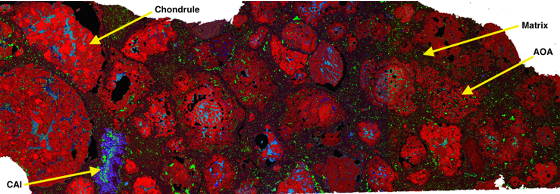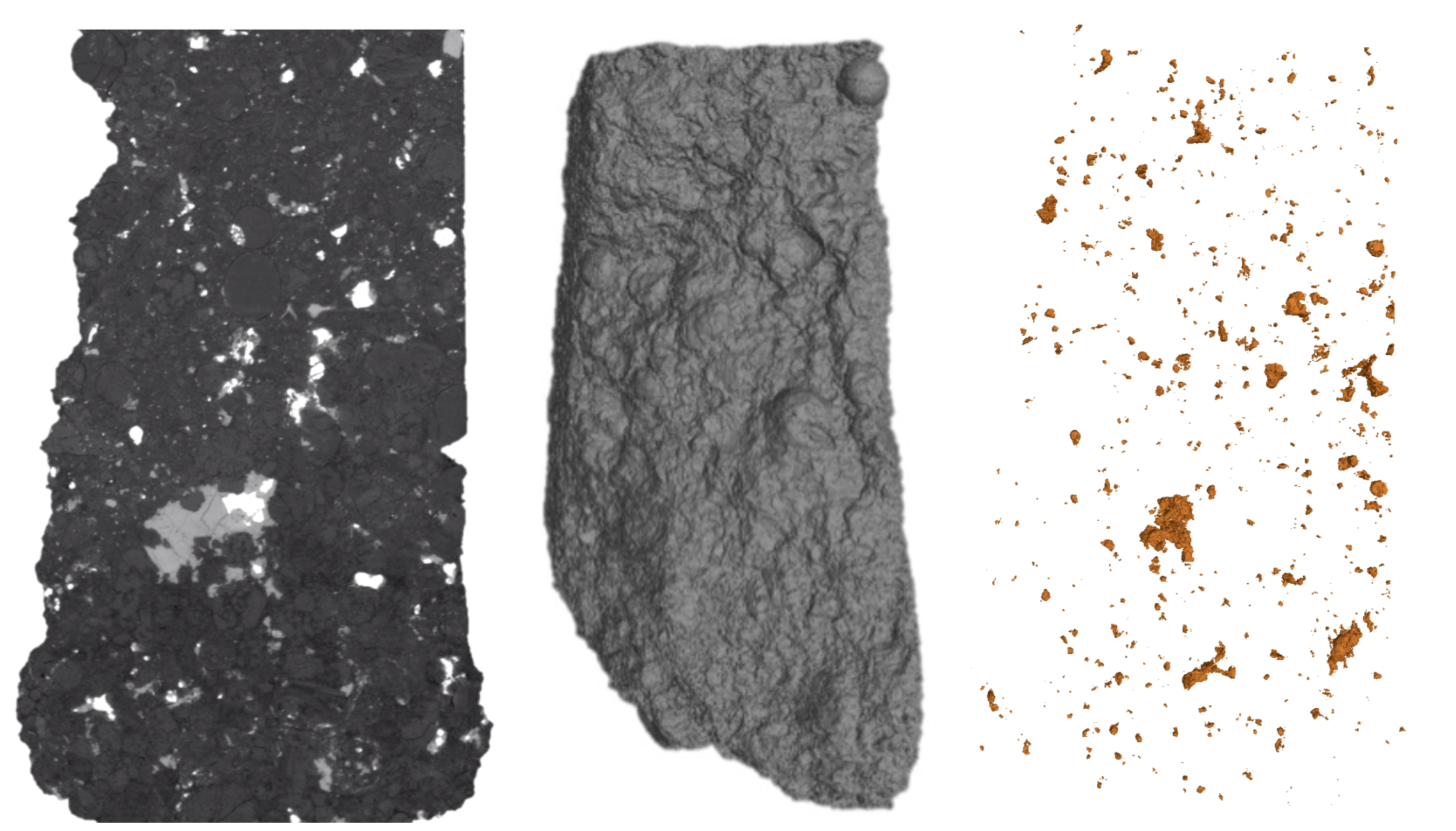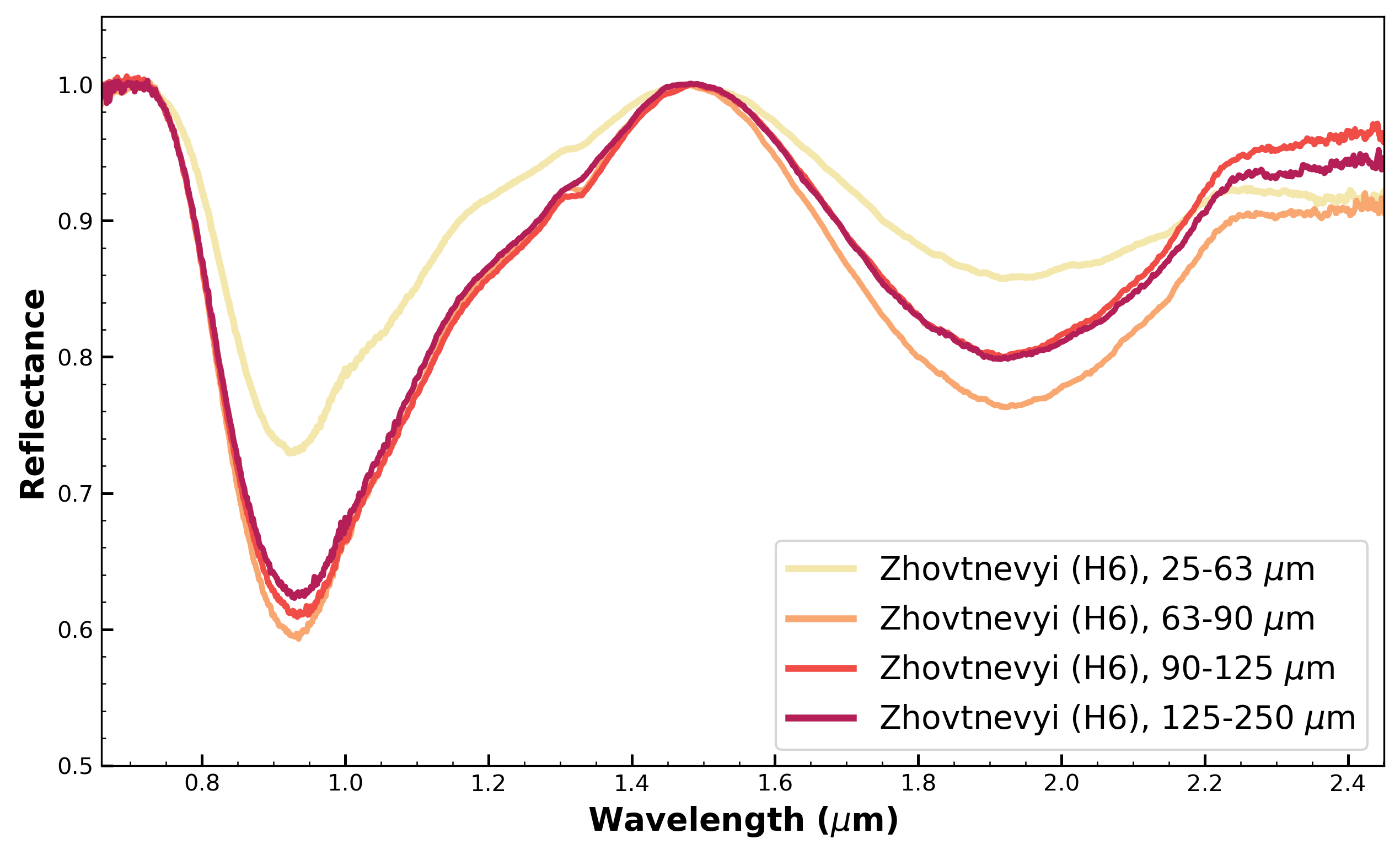Research Experience
American Museum of Natural History
Department of Earth and Planetary Sciences
(2016-present)
Graduate Student Researcher
As part of my dissertation, I am characterizing the mineralogy of ordinary chondrite meteorites and trace element chemistry of carbonaceous chondrite meteorites with Denton S. Ebel.
Stony Brook University
Department of Geosciences
(2016-present)
Collaborating Researcher
Measured VNIR reflectance and MIR emissivity spectra of powdered ordinary chondrite meteorite samples as part of a joint AMNH/SBU project with Timothy D. Glotch.
American Museum of Natural History
Department of Earth and Planetary Sciences
(June 2015 - June 2016)
Research Assistant
Contributed to various projects that exposed me to planetary science topics and sample preparation and analysis methods. Learned how to operate an electron microprobe and a LA-ICP-MS.
American Museum of Natural History
Department of Astrophysics
(January 2014 - May 2015)
Research Assistant
Worked on the expansion of a one-dimensional numerical model, part of a larger numerical simulation examining the consequence of current sheet formation in protoplanetary disks.
MDM 2.4m Telescope
Kitt Peak, Arizona
(January 2014, January 2015)
Observing Assistant
Observed cataclysmic variable stars for 14 nights using the 2.4m telescope at the MDM Observatory on Kitt Peak in Arizona. Data collected was published in Mukadam et. al (2016).
SETI Institute REU Program
NASA Ames
(June 2014 - August 2014)
Research Intern
Validated Kepler planet candidates using speckle imaging from ground-based telescopes under the guidance of Kepler team scientists (Jason Rowe and Steve Howell) at NASA Ames.
Earth Intern Program
Lamont Doherty-Earth Observatory
Research Intern
(June 2013 - August 2013)
Analyzed a peat core from Arctic Siberia using macrofossil identification, LOI, leaf wax n-alkane extraction, and hydrogen isotope analysis to reconstruct the vegetation, climate, and carbon sequestration of the region over time.
Intel Independent Research
Research Grant Recipient
(July 2009 - June 2010)
As a high school junior, I received a $500 Intel Research Grant to develop a research project focusing on the eclipse of the Epsilon Aurigae star system. I observed then proposed a model for the system and presented a final paper at the 2010 Society for Astronomical Sciences Symposium.



